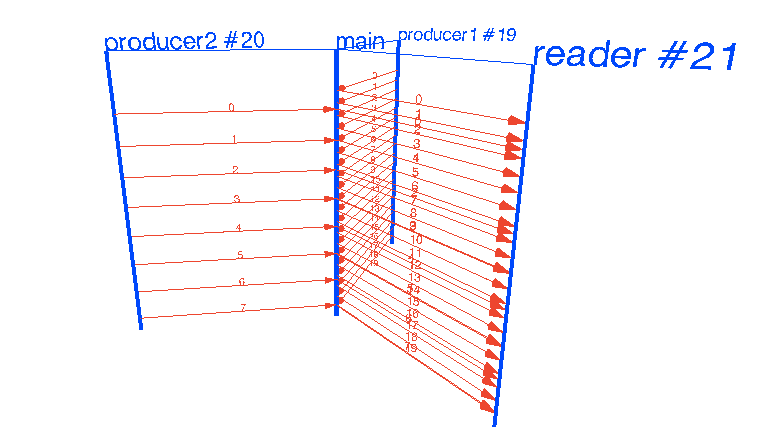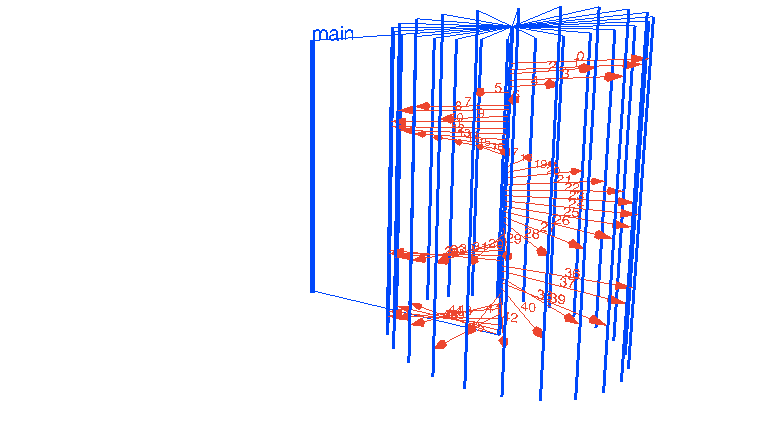
Basic info in README. Sourced from this cool Visualization of Go Concurrency.
myChannel <- someValue a channel is waiting to receive.if all goroutines are currently blocked, go will throw an error message fatal error: all goroutines are asleep
goroutines also block after sending a value, and unblock once it is recieved by a channel receiver
Fan-in is a function reading from multiple inputs and multiplexing all into a single channel
range loopHere, producers run concurrently while the reader, also concurrent, waits to recieve using a range loop.
package main
import (
"fmt"
"time"
)
func producer(ch chan int, d time.Duration) {
var i int
for {
ch <- i
i++
time.Sleep(d)
}
}
func reader(out chan int) {
for x := range out {
fmt.Println(x)
}
}
func main() {
ch := make(chan int)
out := make(chan int)
go producer(ch, 100*time.Millisecond)
go producer(ch, 250*time.Millisecond)
go reader(out)
for i := range ch { // multiplexing the integers being sent to `ch` channel, sending them to reader
out <- i
}
}
Opposite of fan-in, multiple goroutines read from a single channel, distributing work between CPU cores. The following is an animation of 36 workers, where GOMAXPROCS=4 (effectively only 4 goroutines in parallel):

Similar to fan-out, goroutines are spawned for short period of time to complete a task.
accept() in a loop and starts goroutine for each accepted connection